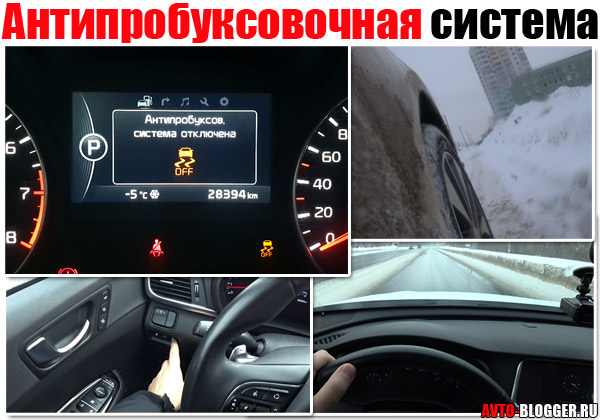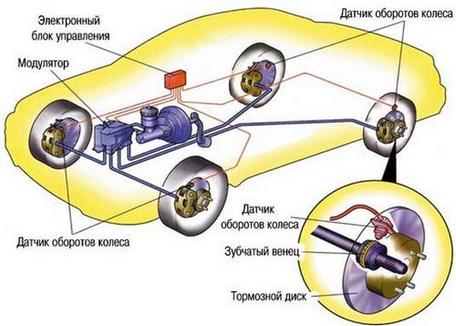
What is anti-lock braking system or ABS
Content
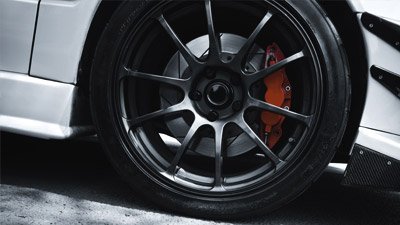 Sudden depressing of the brake pedal in wet or icy conditions causes the wheels of the car to lock up and the tires to lose grip on the road surface. As a result, the vehicle not only does not slow down, but also loses control, which leads to an accident. In such situations, professional drivers use the intermittent braking technique, which allows you to reduce the speed of the car while maintaining the grip of the wheels with the road.
Sudden depressing of the brake pedal in wet or icy conditions causes the wheels of the car to lock up and the tires to lose grip on the road surface. As a result, the vehicle not only does not slow down, but also loses control, which leads to an accident. In such situations, professional drivers use the intermittent braking technique, which allows you to reduce the speed of the car while maintaining the grip of the wheels with the road.
Not all motorists are able to maintain restraint in an emergency and respond to critical traffic situations. Therefore, to prevent the drive wheels from locking when braking, cars are equipped with an anti-lock braking system or ABS. The main task of the ABS is to maintain a stable position of the vehicle throughout the entire braking path and to reduce its length to a minimum.
Today, the system is installed on almost all cars, even in the basic configuration, not to mention the top versions. The first modifications of anti-lock braking systems appeared back in the 1970s, they were one of the options for improving the active safety of a vehicle.
ABS device
The anti-lock braking system includes 3 main blocks:
- speed sensor (mounted on the wheel hubs and allows you to accurately set the start of braking);
- control valves (control brake fluid pressure);
- electronic microprocessor unit (works based on signals from speed sensors and transmits an impulse to increase / decrease pressure on the valves).
The process of receiving and transmitting data through the electronic unit occurs at an average frequency of 20 times per second.
The basic principle of the anti-lock braking system
The braking distance is the main problem in the winter period of operation of the car or on the road with a wet surface. It has long been noticed that when braking with locked wheels, the braking distance will be even longer than when braking with spinning wheels. Only an experienced driver can feel that due to excessive pressure on the brake pedal, the wheels are blocked and, by slightly maneuvering the pedal, change the degree of pressure on it. However, this does not guarantee that the brake pressure will be distributed to the driving pair of wheels in the required proportions.
 The anti-lock braking system is designed to monitor the rotation of the wheelbase. If it suddenly locks up while braking, ABS reduces the level of brake fluid pressure so that the wheel can turn, and then builds up pressure again. It is this principle of ABS operation that makes it possible to provide "intermittent braking", which is considered the most effective for reducing the length of the braking distance on any road surface.
The anti-lock braking system is designed to monitor the rotation of the wheelbase. If it suddenly locks up while braking, ABS reduces the level of brake fluid pressure so that the wheel can turn, and then builds up pressure again. It is this principle of ABS operation that makes it possible to provide "intermittent braking", which is considered the most effective for reducing the length of the braking distance on any road surface.
The moment the driver presses the brake pedal, the speed sensor detects wheel lock. The signal goes to the electronic unit, and from there to the valves. Usually they work on hydraulics, so after receiving the first signal about the beginning of wheel slip, the valve reduces the supply of brake fluid or completely blocks its flow. Thus, the brake cylinder stops its work enough to allow the wheel to turn just once. After that, the valve opens the access of liquid to it.
Signals to release and re-brake each wheel will be given in a certain rhythm, so drivers can sometimes feel sharp shocks that occur on the brake pedal. They indicate the high-quality operation of the entire anti-lock braking system and will be noticeable until the car comes to a complete stop or the threat of the wheels re-locking disappears.
Braking performance
The main task of the anti-lock braking system is not only to reduce the length of the braking distance, but also to maintain control of the steering for the driver. The effectiveness of ABS braking has long been proven: the car does not get out of the control of the driver even with sudden, emergency braking, and the distance is much shorter than with normal braking. In addition, tire tread wear increases if the vehicle has an anti-lock braking system.
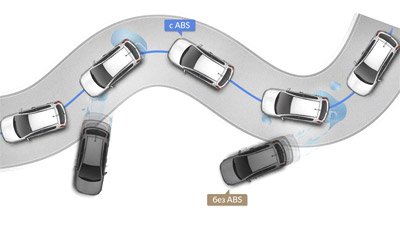 Even if at the moment of a sharp pressing of the brake pedal the car was performing a maneuver (for example, turning), the overall controllability will be in the hands of the driver, which makes the ABS system one of the most important options in organizing the active safety of the car.
Even if at the moment of a sharp pressing of the brake pedal the car was performing a maneuver (for example, turning), the overall controllability will be in the hands of the driver, which makes the ABS system one of the most important options in organizing the active safety of the car.
FAVORIT MOTORS Group experts recommend that novice drivers choose vehicles equipped with a braking assistance system. This will allow even emergency braking with a strong pressure on the pedal. The ABS will do the rest of the work automatically. The FAVORIT MOTORS showroom presents a large number of cars in stock that are equipped with ABS. You can test the system in action by signing up for a test drive. This will allow you to compare the stopping power of a vehicle with and without ABS.
It is important to remember that the system shows the greatest performance only with proper operation of the vehicle. If you drive on ice on summer tires, then when braking, ABS will only interfere. In addition, the system responds slowly when driving on sand or snow, as the wheels sink into the loose surface and do not encounter resistance.
Today, cars are produced with such anti-lock systems, which, if necessary, can be turned off independently.
ABS operation
All modern anti-lock braking systems are considered reliable. They can be used for a long time. Electronic control units fail or fail rarely, as engineers from leading car manufacturers equip them with safety relays.
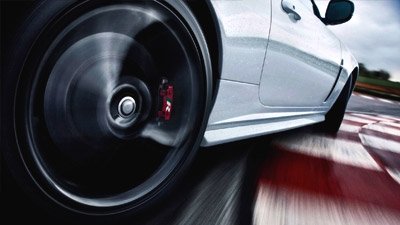 However, ABS has a weak point - speed sensors. This is due to the fact that they are located on the hubs in close proximity to the rotating parts. Therefore, the sensors may be subject to contamination and ice build-up. In addition, a reduction in the voltage at the battery terminals can also have a great impact on the functionality of the system. For example, if the voltage drops below 10.5V, the ABS may not automatically turn on due to lack of power.
However, ABS has a weak point - speed sensors. This is due to the fact that they are located on the hubs in close proximity to the rotating parts. Therefore, the sensors may be subject to contamination and ice build-up. In addition, a reduction in the voltage at the battery terminals can also have a great impact on the functionality of the system. For example, if the voltage drops below 10.5V, the ABS may not automatically turn on due to lack of power.
If the anti-lock braking system (or its element) has malfunctioned, the corresponding indicator will light up on the panel. This does not mean that the car will be unmanageable. The normal braking system will continue to function as on a vehicle without ABS.
Specialists of the FAVORIT MOTORS Group of Companies carry out diagnostics of problems in the system and complete repairs of all ABS components. The car service is equipped with all the necessary diagnostic equipment and narrow-profile tools that allow you to quickly and efficiently restore the ABS performance on a vehicle of any make and year of manufacture.
